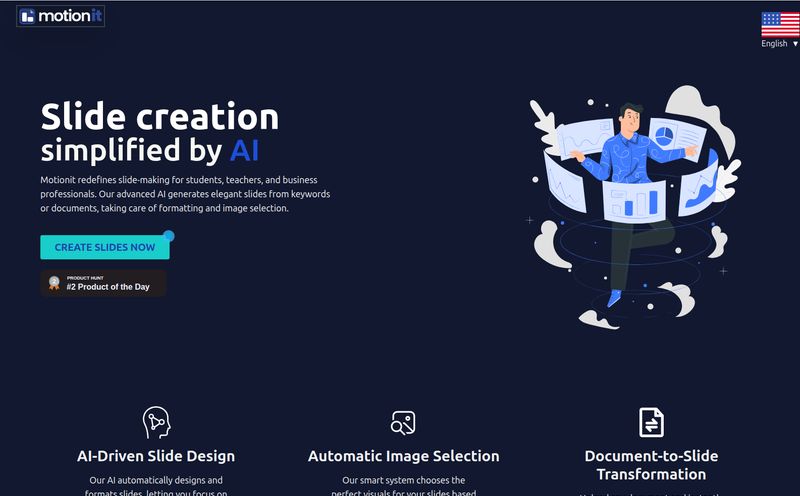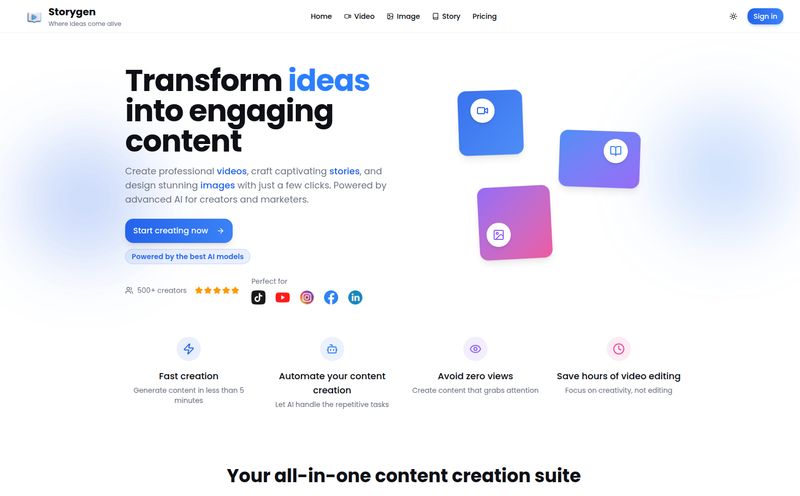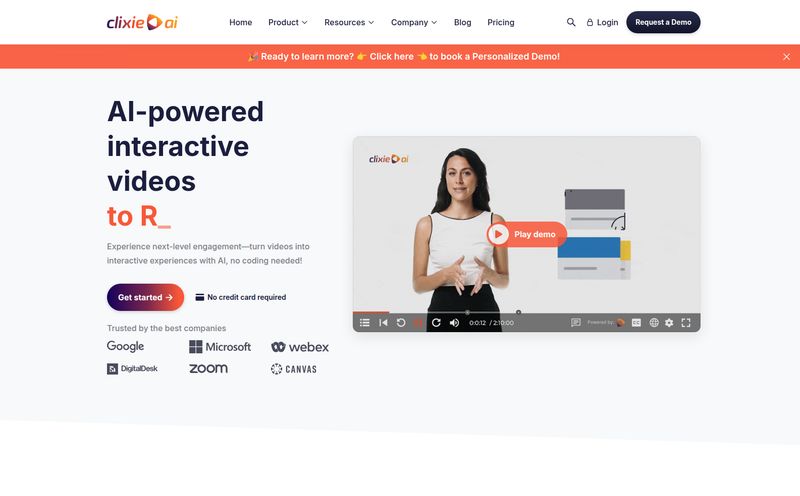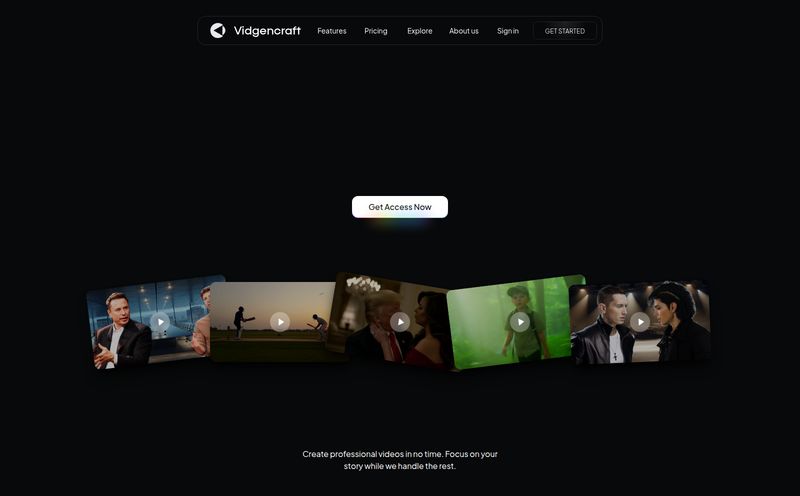We’ve all been there. You have this brilliant, cinematic idea bouncing around in your head. A cyberpunk cat slinking through a neon-drenched alley. A majestic whale breaching through a sea of clouds. A simple, quiet shot of a coffee cup steaming in the morning light. But the gap between that idea and actually creating it? It feels like a canyon. You need a camera, actors, lighting, editing software... or do you?
The world of AI video generation is exploding, and frankly, it's getting a little crowded. Every week there's a new tool promising to turn your wildest thoughts into motion. I've been in the SEO and digital creation trenches for years, and I’ve seen trends come and go. But this one... this one feels different. It feels like the ground is genuinely shifting beneath our feet. And right in the middle of that earthquake is a tool called Pika.
I’ve been keeping an eye on Pika since it was a hush-hush, waitlist-only platform. The tagline on their site, "Reality is Optional," always stuck with me. It’s bold. It’s exactly what this technology feels like. Now that it's open to the public with a full-blown pricing structure, I decided it was time to really kick the tires and see if it lives up to the hype.
So, What is Pika, Anyway?
At its core, Pika is an idea-to-video platform. You feed it a text prompt—a description, a feeling, a scene—and its AI model gets to work, generating a short video clip based on your input. Think of it less like a traditional video editor and more like a creative partner who can visualize things instantly. You're the director, and Pika is your infinitely fast, slightly unpredictable animation team. It’s a tool designed to close that canyon between idea and execution I was talking about.
My First Impressions: Getting Started with Pika
Getting into Pika is refreshingly simple. They offer sign-in options through Google, Discord, and Facebook, which I always appreciate. No need to remember yet another password. For those who remember the early days of these tools, getting access felt like trying to get into an exclusive club. The fact that Pika has moved past the waitlist phase and is now wide open is a huge plus. It shows they're confident in their infrastructure and ready for the masses.
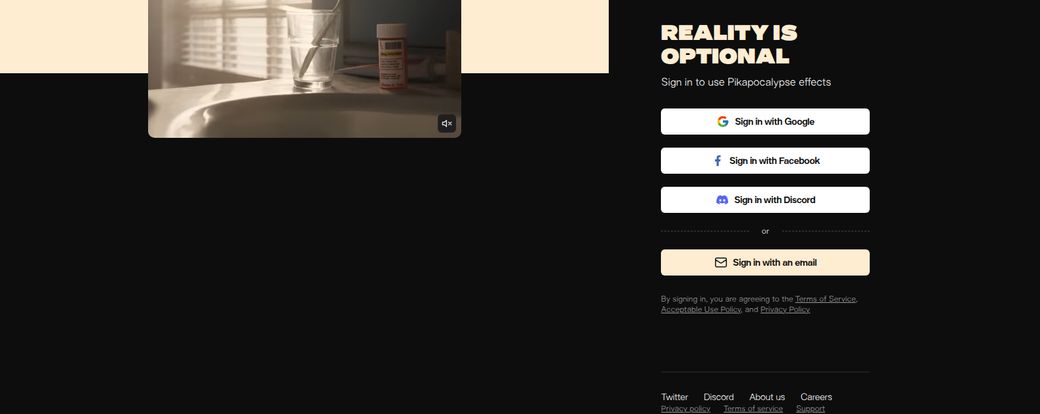
Visit Pika
The interface itself is clean and dark-themed, which seems to be the standard for creative apps these days. It puts the focus squarely on your creations. But the real magic isn't in the login screen; it's in the features humming away under the hood.
The Pika Feature Set: More Than Just Text-to-Video
While the main draw is turning words into video, Pika has a few other tricks up its sleeve. It's not just a one-trick pony, which is crucial for standing out in this market.
Core Generation and The New 2.2 Model
The text-to-video and image-to-video generation is the bread and butter. What's interesting is their transparency about model updates. The pricing page mentions access to the new 2.1 and 2.2 models, especially on the Pro plan. This is a good sign. It means the platform isn't static; it’s constantly being refined for better, more coherent, and higher-quality outputs. As an SEO guy, I see this as building user trust. They're not just selling a black box; they're showing you the engine upgrades.
Creative Modifiers like Animate, Sound, and Extend
This is where things get fun. The pricing chart reveals specific features like PikaAnimate, PikaSound, and PikaExtend. This suggests a suite of tools rather than a single function. You can likely animate static images, add AI-generated sound effects or music, and extend the duration or change the aspect ratio of your clips. This layered approach is smart, allowing for more complex and polished final products without ever leaving the platform. For a social media manager trying to crank out engaging content, this is a godsend.
Let's Talk Money: Pika's Pricing Tiers Explained
Alright, the all-important question: what’s this going to cost me? Pika has adopted a freemium model with a credit system, which is pretty common for AI services. Here’s how it breaks down, and I've put it in a table to make it a bit easier to digest.
| Plan | Price (Yearly) | Monthly Credits | Key Features |
|---|---|---|---|
| Basic | $0 / Free | 30 | Includes watermark, commercial use allowed. |
| Standard | $8 / month | 700 | No watermark, faster generation, roll over credits. |
| Pro | $28 / month | 2300 | Fastest generation, access to new models (2.2). |
| Fancy | $76 / month | 6000 | All Pro features, for heavy users. |
The All-Important "Credit" System
Now, this is the part that can trip people up. Not all actions are created equal. Using Pika is like going to an arcade. You buy a bucket of tokens (credits), but the Skee-Ball machine costs one token per play while the fancy VR game costs ten. Pika's pricing page shows that generating a simple 3-second video might cost 9 credits, but a 15-second one using the fancy new 2.2 model could be 90 credits. Extending a video or adding sound will also dip into your credit pool. It takes a little getting used to, but it also gives you fine-grained control over how you spend your monthly allowance. I actually prefer this to opaque systems where you never know why one generation was "heavier" than another.
Who is Pika Actually For?
After playing around with it, I don’t see Pika replacing a full-scale video production team for a Hollywood blockbuster just yet. But that’s not the point. I see it being incredibly powerful for a few key groups:
- Social Media Managers: Need an eye-catching, slightly surreal video for an Instagram Reel or TikTok? Pika can spit out concepts in minutes.
- Marketers & Advertisers: Perfect for A/B testing visual concepts for an ad campaign without spending a dime on production first.
- Writers and Indie Filmmakers: An amazing tool for storyboarding or creating visual animatics to pitch an idea. It brings the script to life.
- Artists and Hobbyists: People who just want to experiment and create weird, beautiful, and wonderful moving images. It's a digital playground.
It occupies a sweet spot of being more powerful than a simple GIF maker but less intimidating than professional VFX software like Adobe After Effects.
The Good, The Bad, and The Creative
No tool is perfect, right? Here’s my honest take. I love the sheer speed and accessibility. The feeling of typing a sentence and seeing it flicker to life a minute later is genuinely magical. The free tier is also generous enough to let you really decide if the tool is for you. The constant model updates are also a huge plus.
On the flip side, the credit system requires a bit of a learning curve. And like all current AI video, the results can sometimes be... well, a bit wonky. You'll get the occasional five-legged dog or a face that melts in a not-so-artistic way. You have to learn to work with the AI, guiding and re-rolling prompts to get what you want. It's a skill in itself. But for rapid ideation and creative exploration, these imperfections are often part of the charm.
Frequently Asked Questions about Pika
How much does Pika cost?
Pika offers a free 'Basic' plan with 30 monthly credits (with a watermark). Paid plans start at $8/month (billed yearly) for the 'Standard' plan with 700 credits and no watermark, and go up to $76/month for heavy users.
Can I use Pika videos for commercial purposes?
Yes, according to their pricing page, commercial use is permitted on all plans, including the free Basic plan. However, videos created on the free plan will have a Pika watermark.
What is the Pika 2.2 model?
The 2.2 model appears to be Pika's latest and most advanced generation model, available on the Pro and Fancy plans. It likely offers higher quality, better coherence, and more detailed results, but it also costs more credits per generation.
How do Pika credits work?
Credits are like tokens used to perform actions. The number of credits used depends on the action (e.g., generating video, extending a clip), the length of the video, and the model you use. More complex or higher-quality requests consume more credits.
Is Pika better than Runway or Sora?
It's not about 'better', it's about 'different'. Pika seems to excel at ease of use, speed, and creative ideation. Tools like Runway have a more established suite of editing features, while OpenAI's Sora (when it's released) is aiming for unparalleled cinematic realism. The best tool depends entirely on your specific needs and budget.
My Final Verdict on Pika
So, is Pika the AI video generator you've been waiting for? If you're a creator, marketer, or just a curious human looking for a powerful and accessible way to bring ideas to life, my answer is a resounding yes. It’s not a magic button that will create a perfect film for you—no AI is. But it is an incredible instrument. Like learning a new guitar, you'll need to practice with it, learn its quirks, and figure out how to make it sing.
Pika has built a fantastic, user-friendly platform that cleverly balances power with simplicity. It’s a tool that genuinely makes you feel like, just for a moment, reality really is optional. And as a creator, what more could you ask for?
